The Ancient Agora of Athens is the second most important archaeological site in Athens, following Acropolis Hill. Wondering why? The Ancient Agora served as the pulsating heart of Athens’ public center. Everything unfolded in the Agora – it was the bustling meeting point where people gathered for many reasons in ancient Athens.
The Ancient Agora of Athens is often called the Birthplace of Athenian Democracy. Within these grounds, political discussions and arguments echoed and played a pivotal role in shaping laws. The discussions/arguments were in reality a practice of the concept of Athenian Democracy.
*Some of the links below are affiliate links. That means I may make a commission if you click and buy. The commission comes at no additional cost to you.
Ancient Agora of Athens Quick Facts
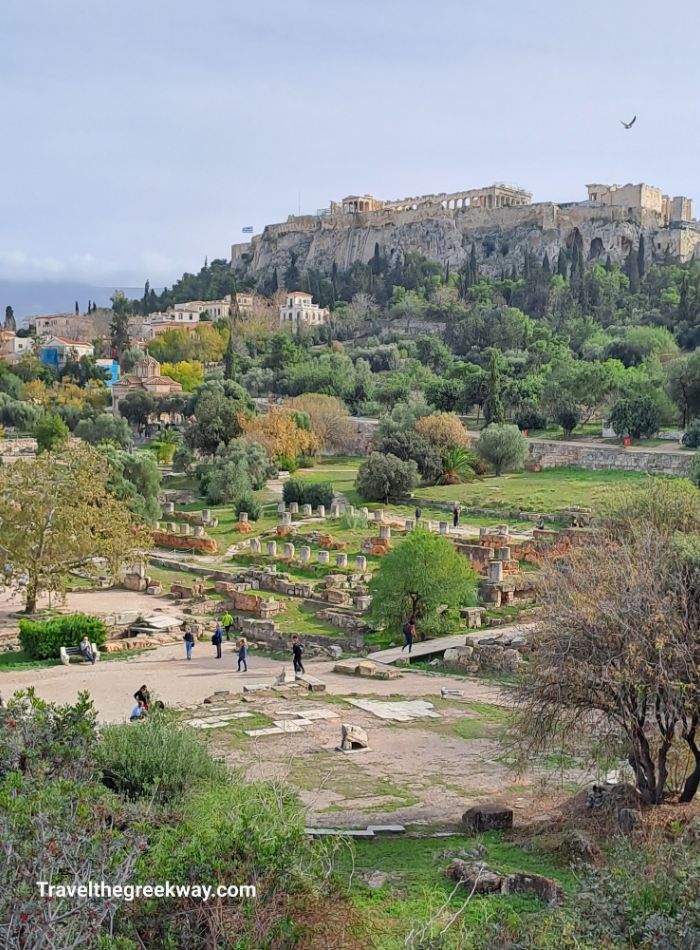
Thanks to extensive findings from excavations and detailed accounts by ancient travelers, we now understand what the Agora was for ancient Athenians.
- Commercial Center: A bustling marketplace teeming with shops where artisans such as potters, shoemakers, coppersmiths, and sculptors crafted and traded wares.
- Religious Center: Evidenced by numerous small shrines and temples, the Agora held a significant place in the religious life of ancient Athens.
- Cultural Center: Boasting a library and a conservatory, the Agora emerged as a cultural epicenter. Renowned Greek tragedy playwrights Aeschylus, Sophocles, Euripides, and comedy playwright Aristophanes, premiered their seminal works in and around the vibrant precincts of the Agora of Athens.
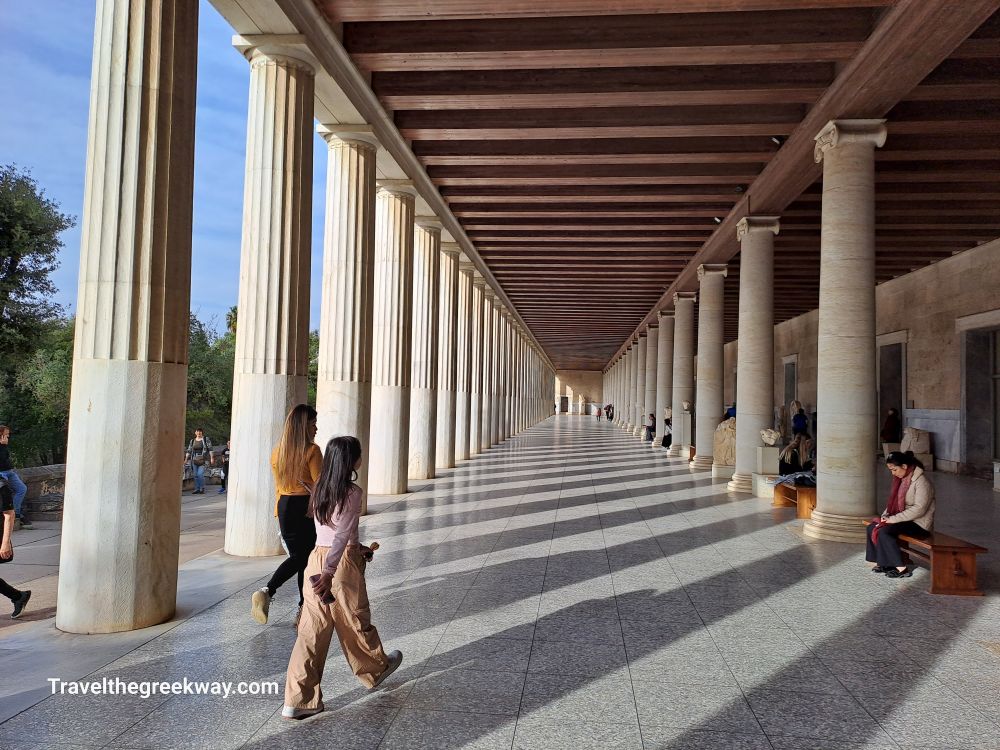
4. Administrative, Political, and Judicial Center: Nestled within the Agora was the Athenian Parliament, a place of legislative, political, and judicial significance. It was here that Socrates faced accusations of impiety in 399 BCE, leading to his tragic death sentence.
5. Philosophical Center: Agora was near Simon’s shoe shop, a historic site where Socrates engaged with his disciples. This is where Aristotle first listened to Socrates and became his student. Notable philosophers like Protagoras, Parmenides of Elea, and Anaxagoras found the Agora’s public buildings as spaces to both argue cases and impart their wisdom.
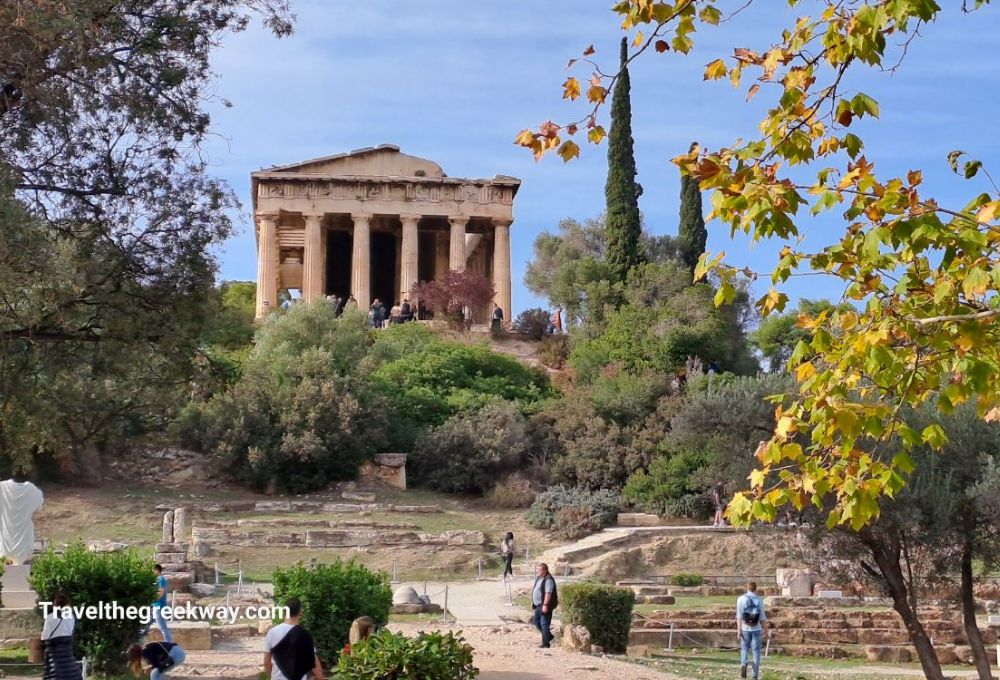
6. Social Center: Beyond its official functions, the Agora was a vibrant social space. Friends gathered amidst the beauty of the greenery, trees, gardens, monuments, and fountains, engaging in discussions spanning business, politics, and philosophy. Even today, the park inside Agora remains a beautiful place to visit.
My Latest Video on the Ancient Agora of Athens
Greek History Time Frame
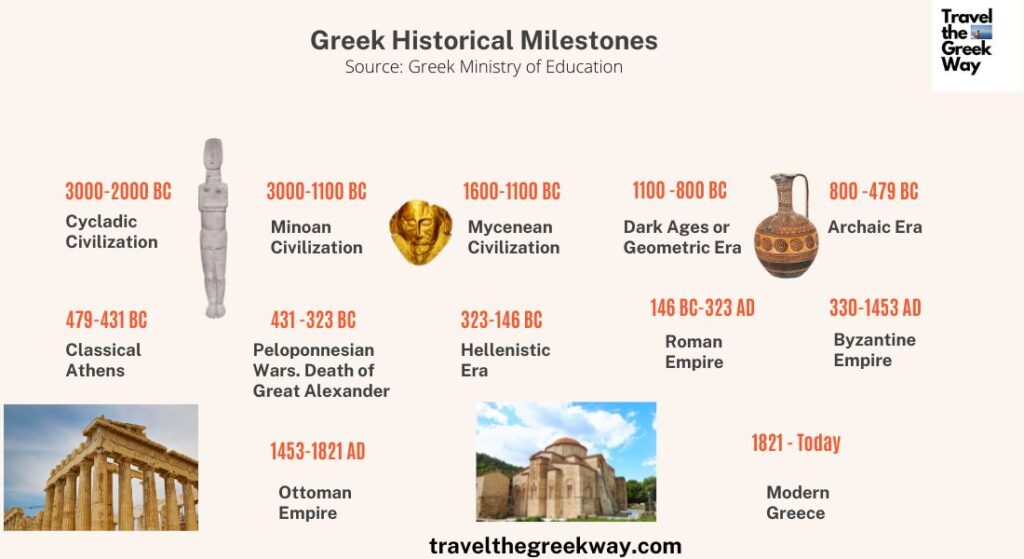
To understand better the time frame of the Ancient Agora operation, I have created this infographic of the major eras of the history of Greece. Around 550 BCE, the Agora of Athens was founded on 122 acres northwest of the Acropolis Hill, between the hills of the Arion and the Agoraion Kolonos. For at least four centuries, the Agora remained the bustling epicenter of Athens during the Classical and Hellenistic periods.
Important Dates in Agora’s History
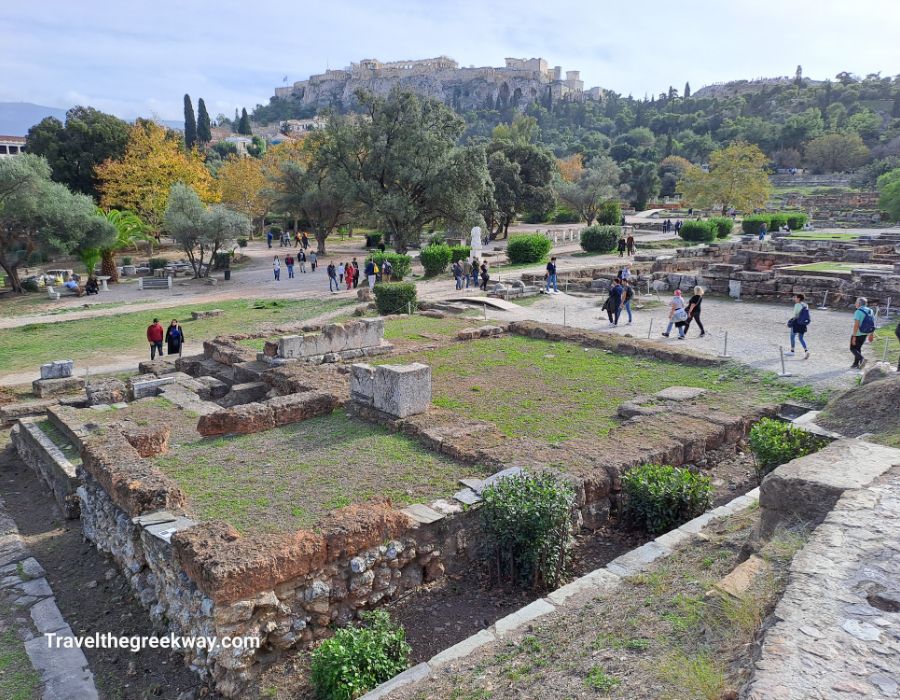
- 1600-700 BCE: The area served as a cemetery with evidence of Mycenaean Tombs
- 520 BCE: During the Pisistratos tyranny, the Southeastern Fountain and the Altar of the 12 Gods, were built.
- 508 / 507 BCE: With the establishment of Democracy, an era of intense building activity commenced in the Agora.
- 480 / 479 BCE: The Persian invasion ruined many Agora buildings, but ruler Pericles renovated them shortly after. Panathenaic Street, a central avenue, emerged, hosting the grand Panathinea festival every four years.
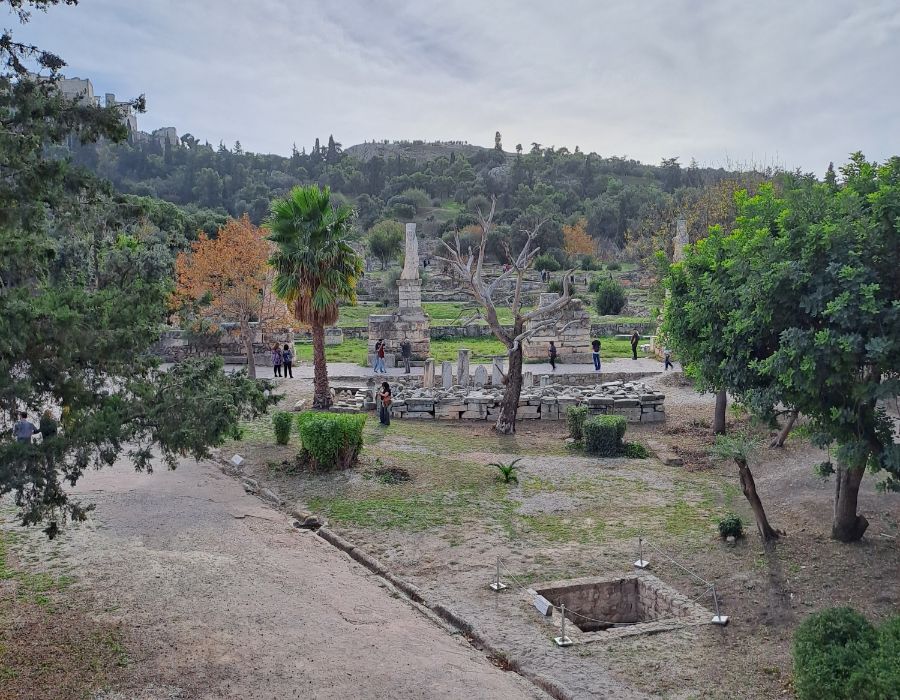
- 475 – Roman Times: There were more and more public constructions, which is directly linked to the flourishing of Democracy.
- 86 BCE: Romeo Syllas destroyed the Agora as punishment for Athenian support to the King of Pontos against the Romans.
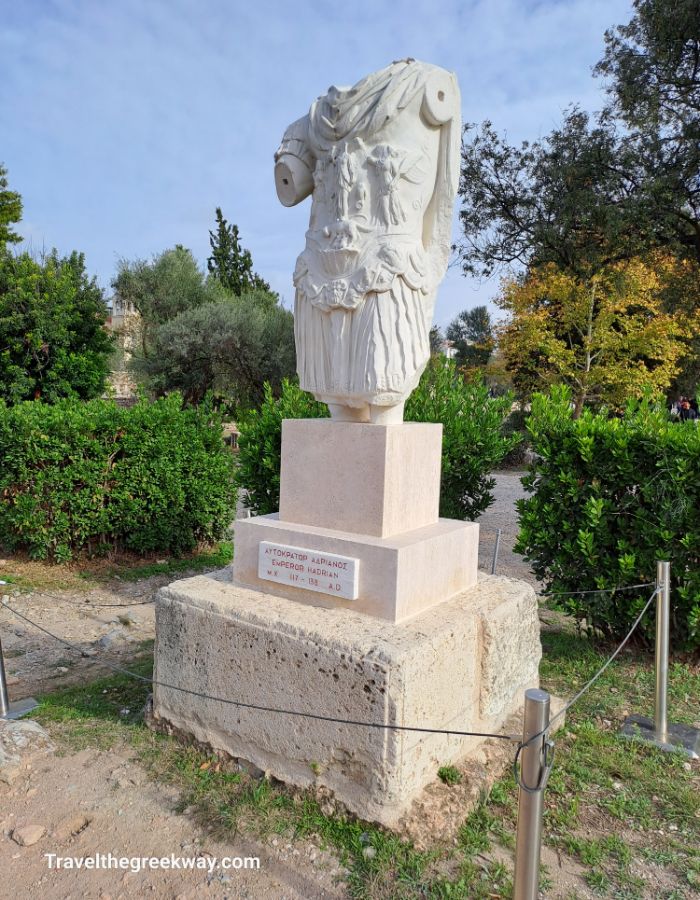
- 27 BCE – 138 CE: Roman Emperors Octavios and Hadrian contributed to the Agora’s prosperity by renovating, building odeons, and adding temples. During
- 51 CE: According to the Book of Acts 17:16-33, Apostle Paul preached about the new religion and Jesus Christ.
- 267 CE: The invasion of the Germanic tribe Heruli led to the destruction of Agora buildings.
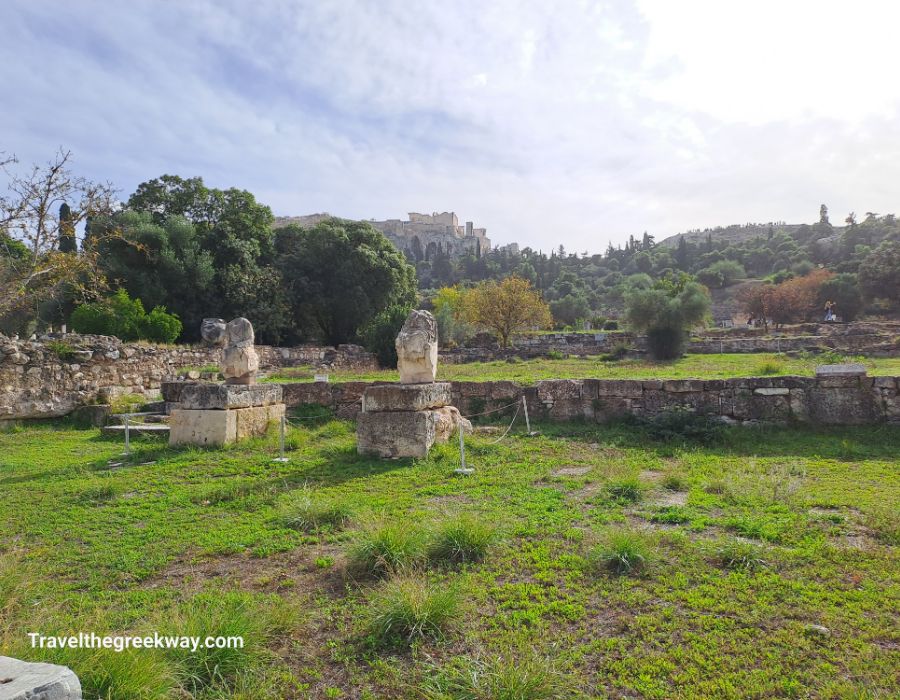
- 396 CE: The Visigoths’ invasion destroyed the Agora even more. Some of the buildings were later rebuilt.
- 5th and 6th centuries CE: The Agora experienced a last flourish with the Athenians constructing opulent urban villas.
- End of the 4th to the end of the 6th century CE: Unfortunately, successive attacks by barbarian tribes resulted in the once-again destruction of the Agora’s buildings, leading to its ultimate decline.
- 10th century: During the Byzantine Empire’s expansion, the Agora was re-inhabited. This era saw the construction of Solakis church, adding to the cultural landscape of the area.
- 13th to 17th centuries: The Agora was abandoned, with all structures being buried under layers of mud, except the Temple of Hephaestus, which was transformed into a church.

- In 1931 the American School of Classical Studies in Athens started excavations in the area and more than 400 residential houses had to be demolished.
The Monuments in the Ancient Agora of Athens
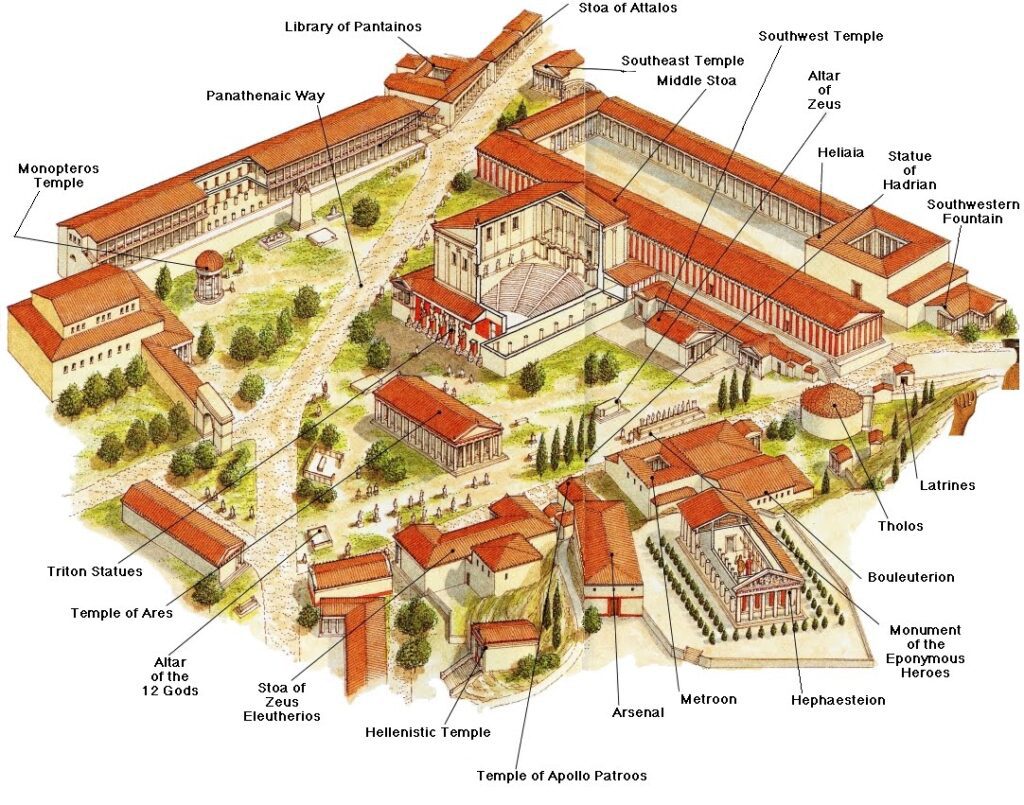
The image above shows the Ancient Agora at its peak. As you explore this historic site today, two remarkable structures stand— the iconic Temple of Hephaestus (Hephaesteion) and the (reconstructed) Stoa of Attalos.
But let’s discuss a bit more about the monuments you can see today:
The Temple of Hephaestus
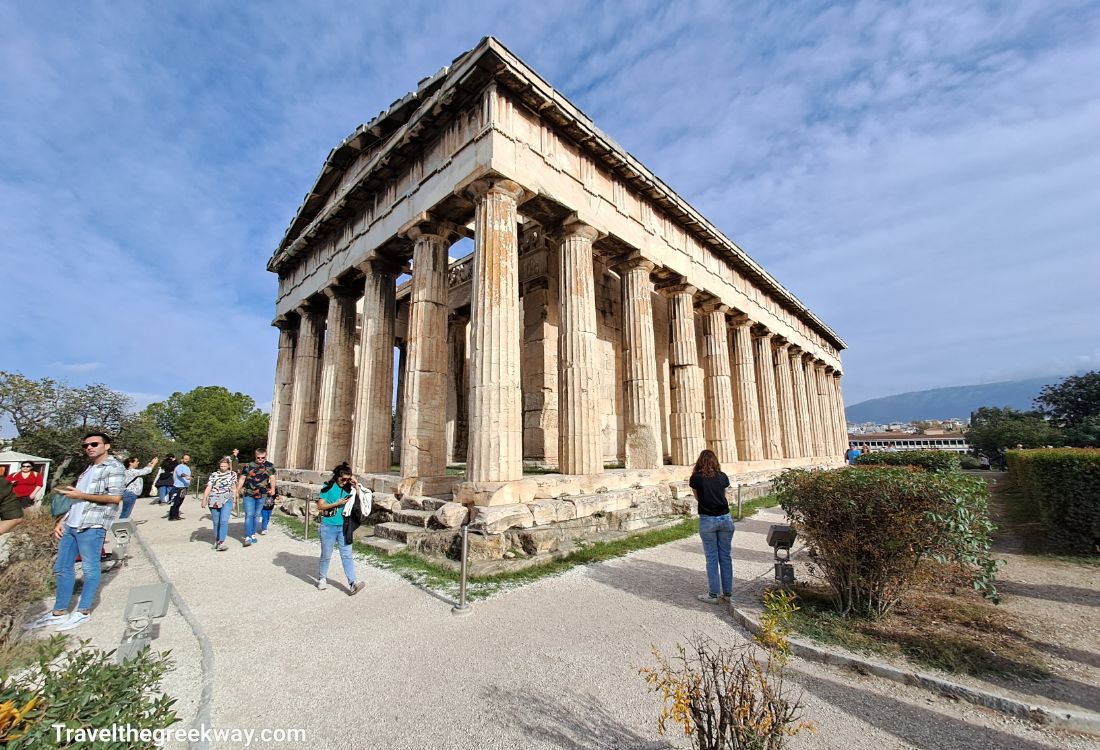
Every journey on the above-ground metro, from Monastiraki towards Thission and Pireaus, unveils the magnificent Doric Temple of Hephaestus. It is located atop the Agoraios Kolonos Hill, a natural western boundary of the Agora. Dedicated to both Hephaestus and Athens, the Temple stands as one of Greece’s most impeccably preserved treasures.
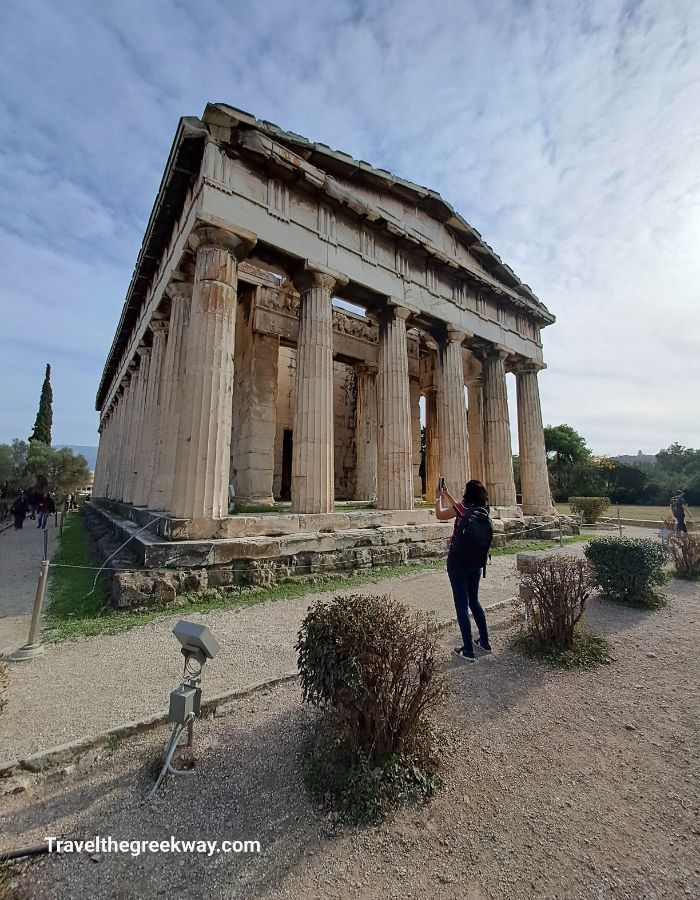
The construction of the temple (we don’t know the architect’s name) was probably between the years 460 and 420 BCE. It is made of Pentelic marble. Penteli is one of the four major mountains encircling Athens.
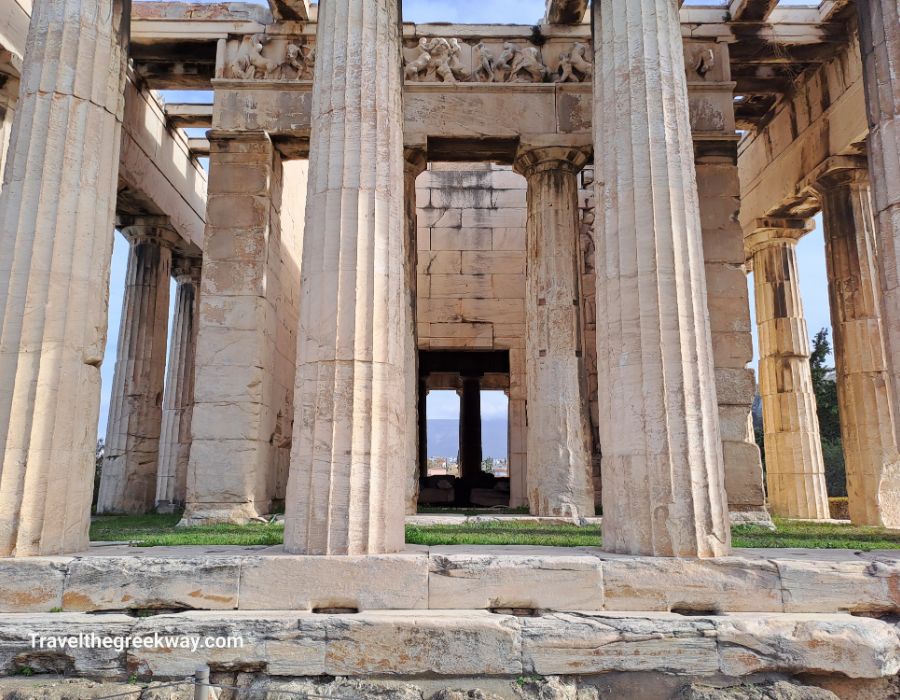
If you’re curious why the Temple of Hephaestus stands in such impeccable condition compared to many other ancient structures left in ruins, the answer may lie in its transformation.
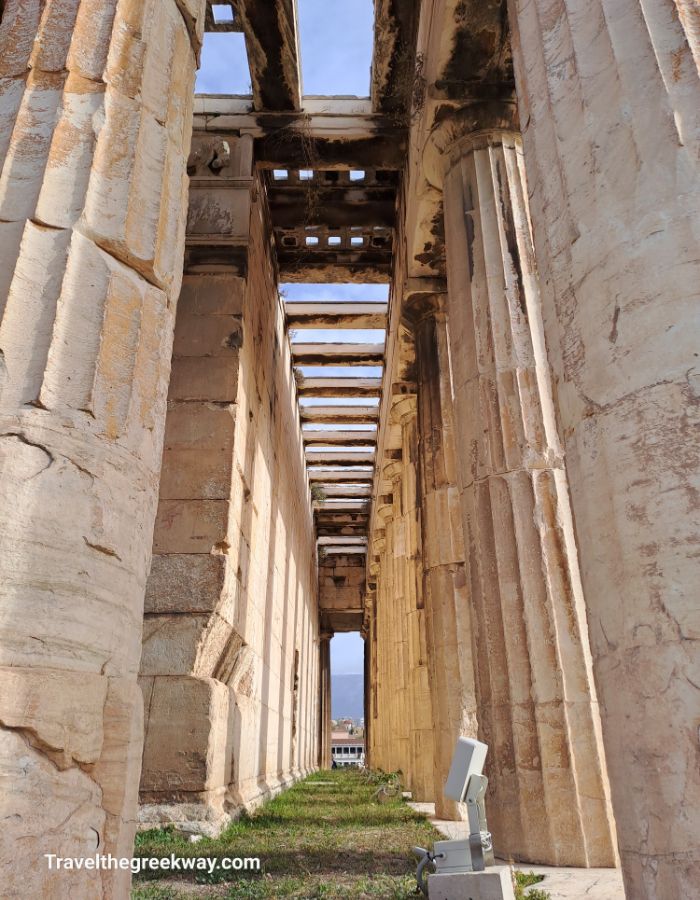
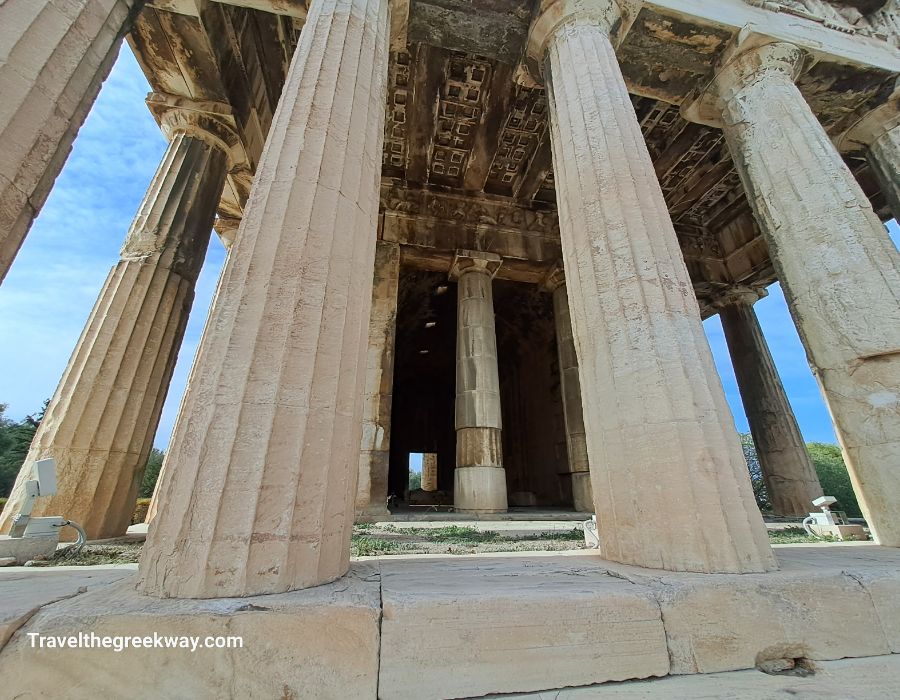
In the 7th century CE, the temple was converted into the church of Agios Georgios of Akamas until Greece gained liberation from the Ottomans in 1833. In 1834 the Ancient Agora of Athens was officially declared a protected archaeological site.
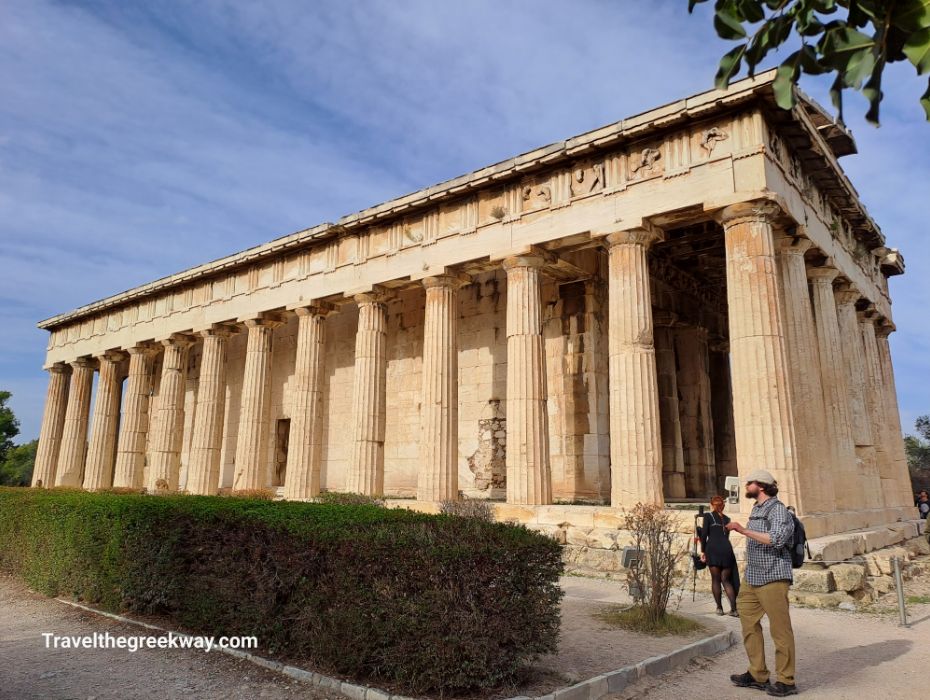
The Vouleuterion (Parliament)
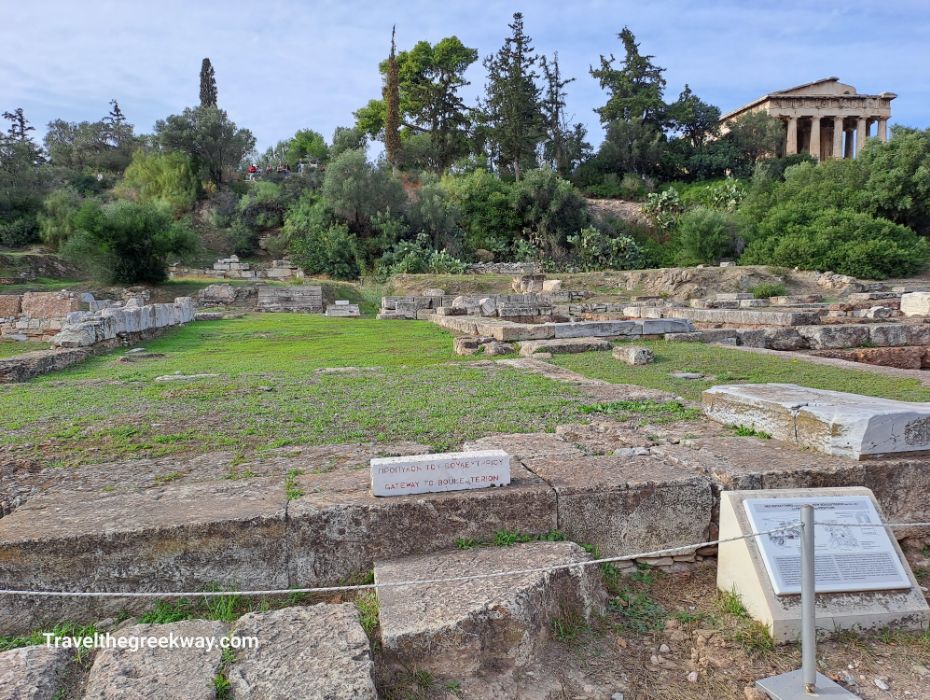
The Vouleuterion (or Bouleuterion) served as the meeting place for the Boule (Parliament), or the Council of 500, a central legislative body in Athenian democracy. These representatives gathered at the Vouleuterion to discuss and make decisions on various public affairs. It was initially introduced by Solon in 594 BCE but underwent significant reforms by Cleisthenes in 508/507 BC, hailed as the ‘Father of Athenian Democracy.’
Tholos
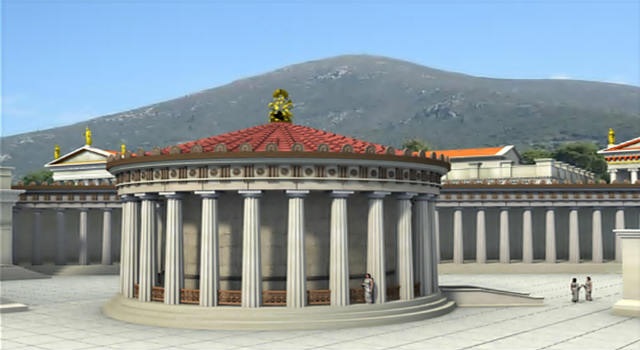
Tholos is an architectural feature that was popular in classical Greece. It is a circular temple of the Greek peripteral architectural type, surrounded by a circular colonnade.
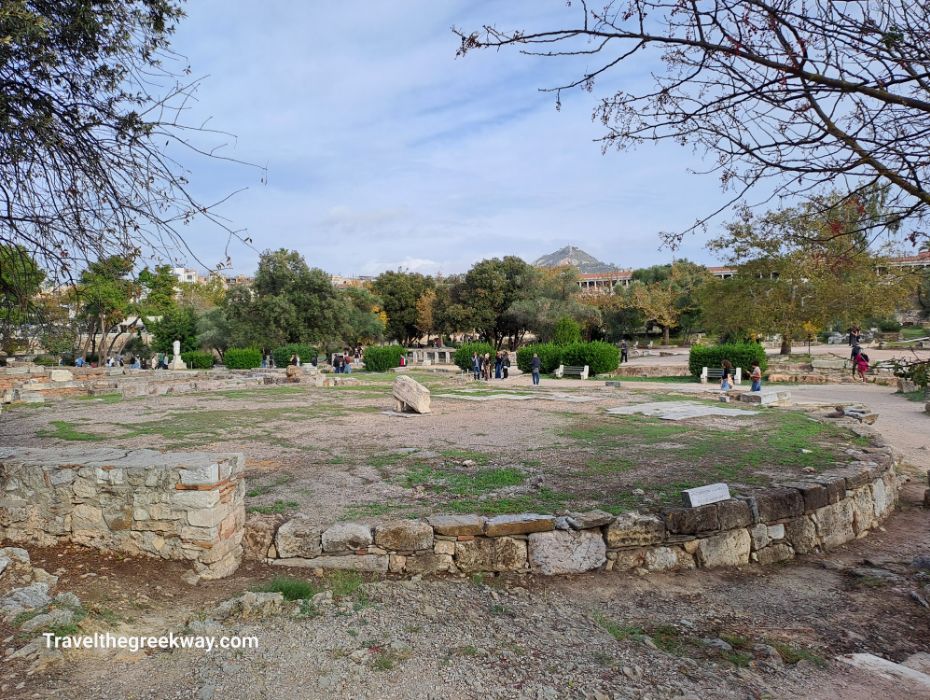
The Tholos of the Ancient Agora (c. 460 BCE) was a circular structure with six columns inside and a propylon on the east. It was the seat of the Council of 500 for 35 or 36 days before being succeeded by another 50 delegates. The Tholos also served as the communal dining place where the Prytanes enjoyed their meals at public expense
Tip: Other famous Tholoi in Greece are:
- The Tholos in Delphi archaeological site
- The Philippeion in Ancient Olympia
- The Tholos in Asklepion Sanctuary of Epidaurus
The Byzantine Church of Agioi Apostoloi Solakis
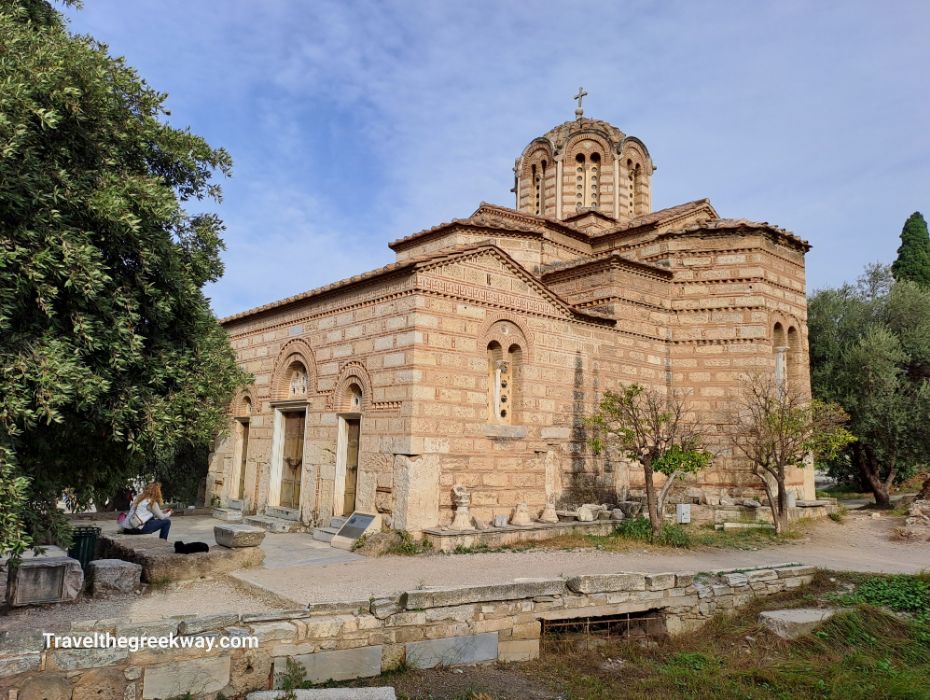
Towards the Acropolis hill and near the Stoa of Attalos, sits the gorgeous Byzantine temple of Agioi Apostoloi Solakis. They built the church partly on an ancient monument dedicated to the Nymphs in the late 10th century. It is the only medieval monument that survives in the area of the Athenian Agora and it was restored in its original form between 1954 and 1957.
The Church operated for 1000 years until 1931 when the excavations started and it became one of the monuments of the Ancient Agora of Athens. However, once a year, on June 30th, there is a liturgy in the evening and it welcomes people.
You may also enjoy the best Byzantine Churches in Athens
Attalos Stoa and Ancient Agora’s Museum
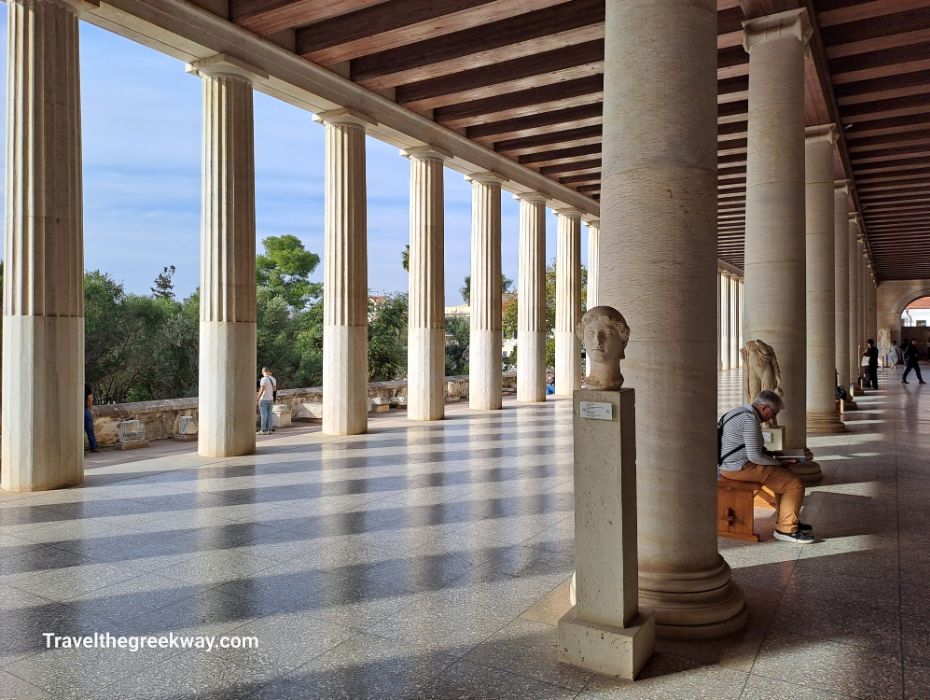
The Stoa of Attalos was a gift by King Attalos II Philadelphus of Pergamon to the city of Athens in 150 BCE. The impressive construction boasted two floors, each hosting 21 shops, making it the largest roofed building in ancient Greece at 120 meters in length. The Germanic Heruli and the Visigoths destroyed it completely.
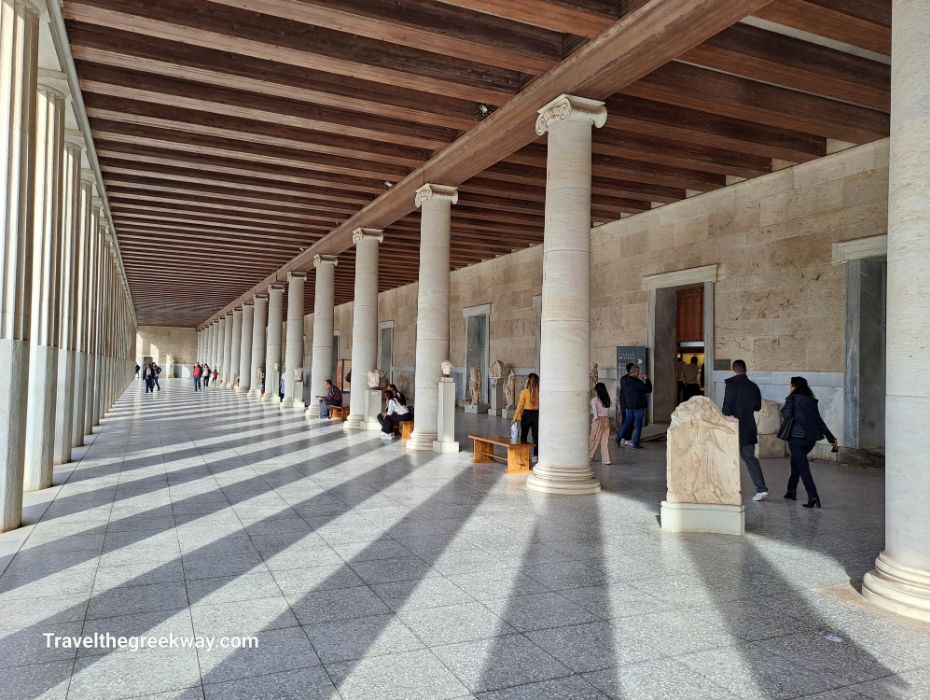
Historical Insight: In an intriguing display of Hellenistic diplomacy, kings employed various gestures to maintain control over occupied Greek cities. Among these diplomatic tools was the practice of presenting costly gifts to the cities, a strategy reflected in the construction of the Stoa of Attalo
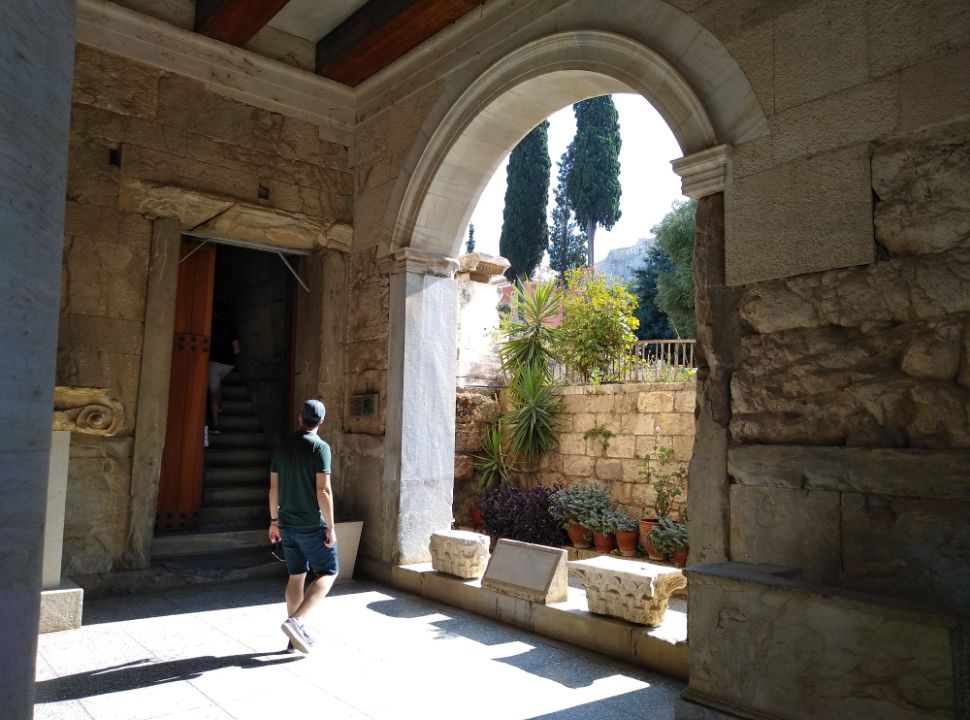
Between 1953 and 1956, the American School of Classical Studies undertook the restoration of the Stoa of Attalos, a project guided by the studies of Greek architect Ioannis Traulos. This was made possible by the generous donation of John D. Rockefeller Jr. Today, Stoa of Attalos serves as the Ancient Agora of Athens Museum, showcasing the archaeological treasures unearthed during excavations.
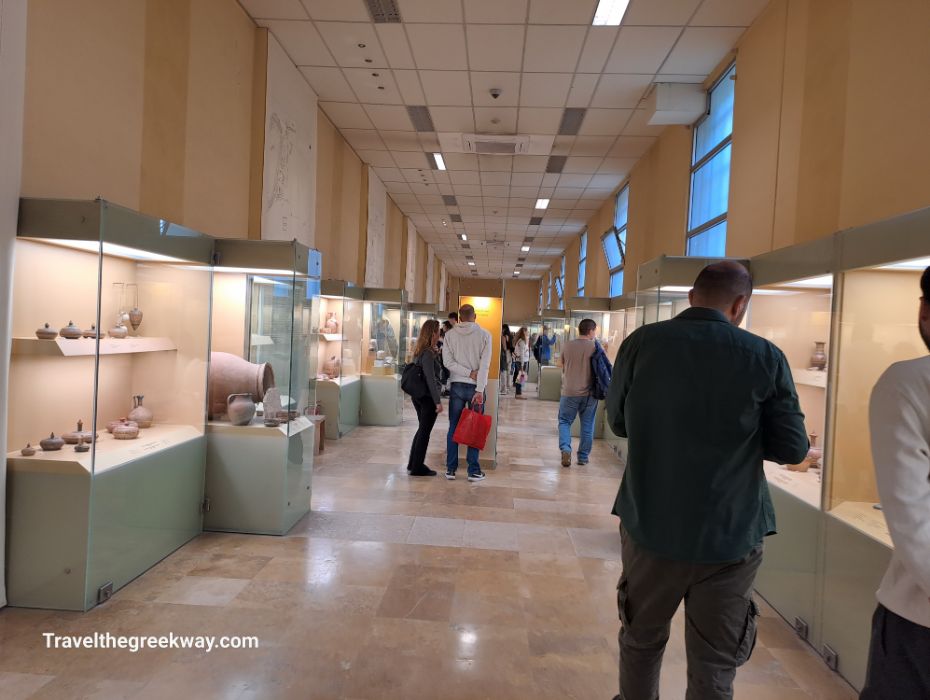
Exhibits in the museum include important remains of the Bronze and Iron Age burials from the earlier periods, and objects from Hellenistic, Roman, and Byzantine times representing the post-classical Agora.
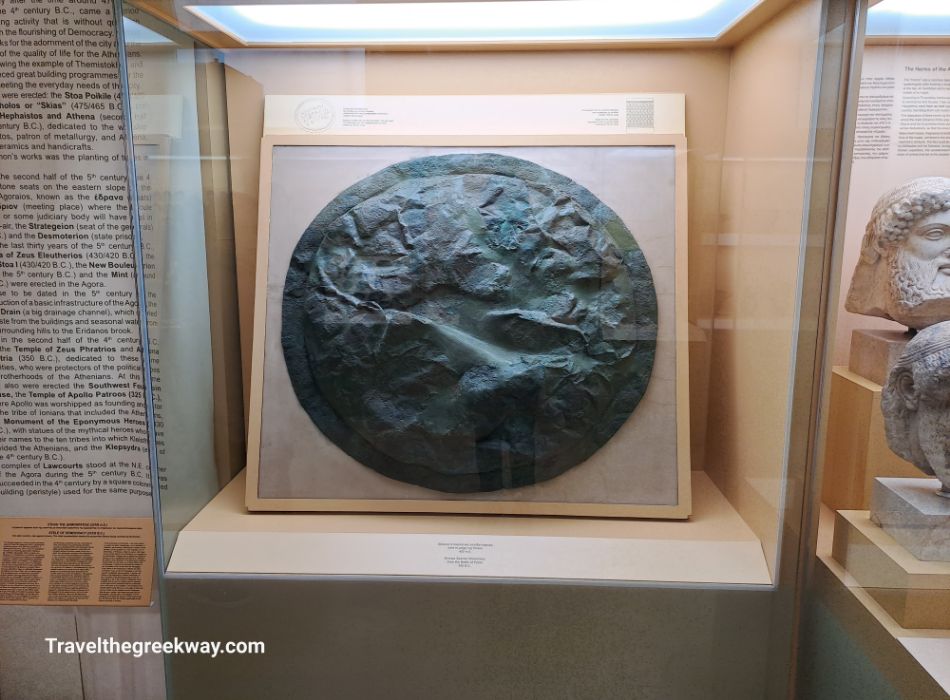
Two of its most important exhibits are the statue of Apollo Patroos (4th century BCE), a Spartan shield, and the column with the famous resolution against Tyranny (337-6 BCE).
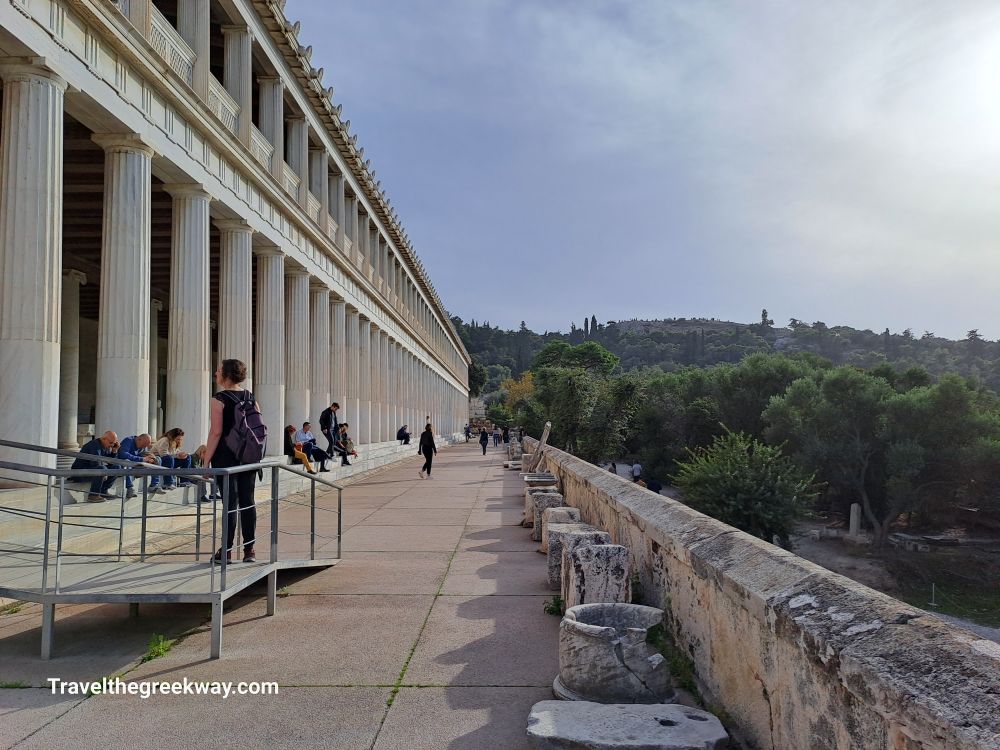
Other Important Monuments in Agora
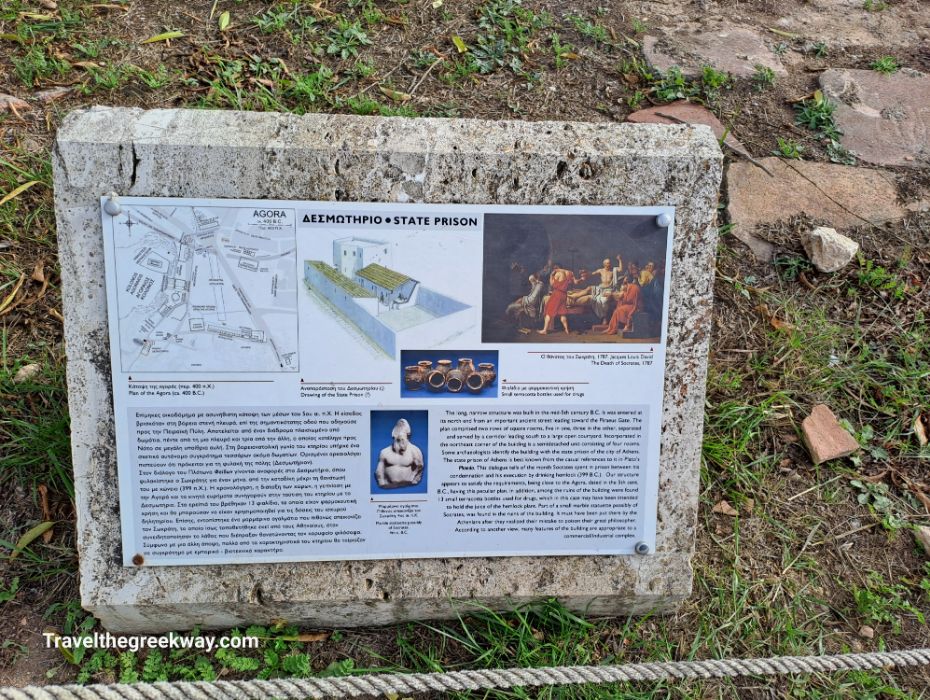
The above-mentioned monuments might be the most prominent but you have to walk around the area to discover all the hidden treasures of the Ancient Agora of Athens. Keep an eye out for those:
- A new statue of Socrates and Komfoukios discussing philosophy
- The surviving torso of a statue of the Roman Emperor Hadrian (117-138 CE)
- The fence that surrounded the Monument of the Eponymous Heroes (circa 330 BCE)
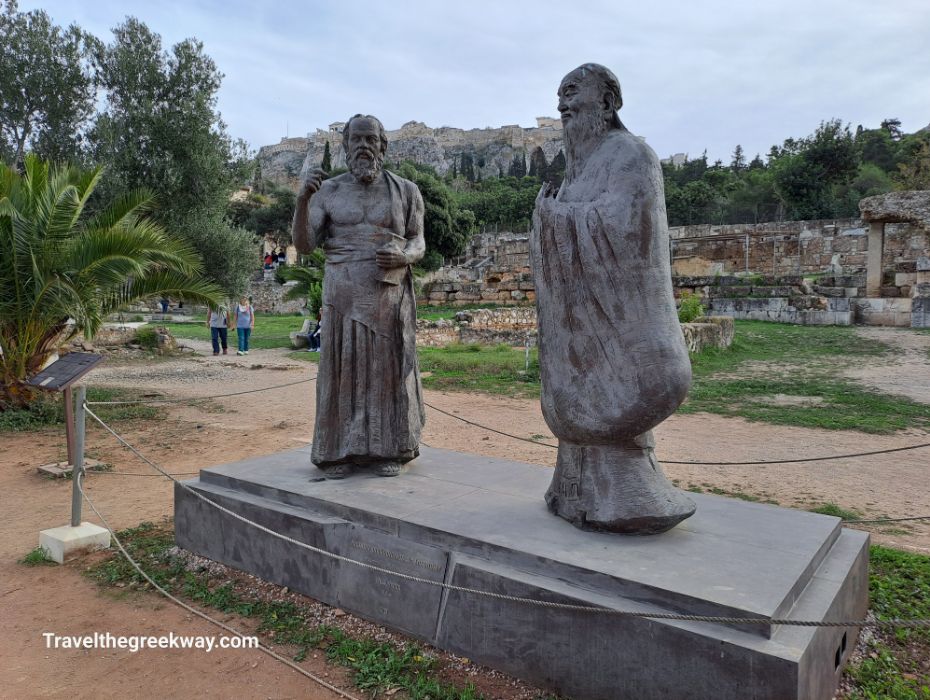
- The Klepsydra (water clock) which was timing speeches.
- The Altar of the Twelve Gods.
- Near Klepsydra you will see the Dekasterion or Courthouse.
- The Altar of Zeus Agoraios (4th c. BCE).
- The Southwest Fountain House.
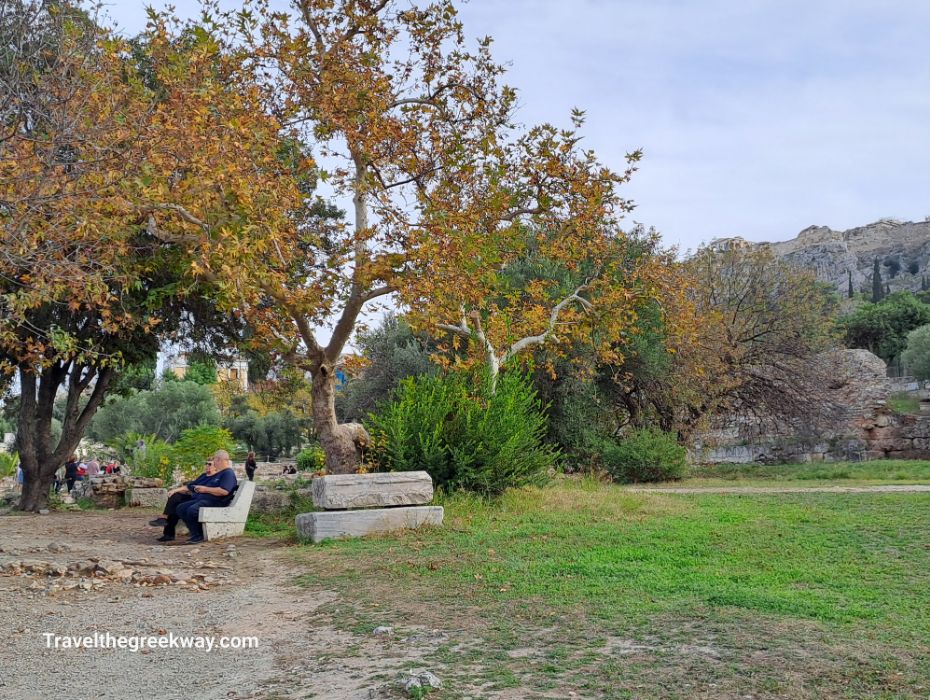
- Nomismatokopio (where the coins were cut).
- Monument of the Eponymous Heroes (c. 330 BCE), a marble pedestal approximately 16 meters long. It contained the bronze statues of the mythical heroes of each of the ten tribes of Athens: Akámas, Aigéas, Aías, Antíochos, Kékropas, Erechthéfs, Ippothóontas, Leós, Oinéas, Pandíon.
- Metroon.
- Public Baths.
- Agrippas Odeon.
- State Prison.
Ancient Agora Opening Hours and Tickets
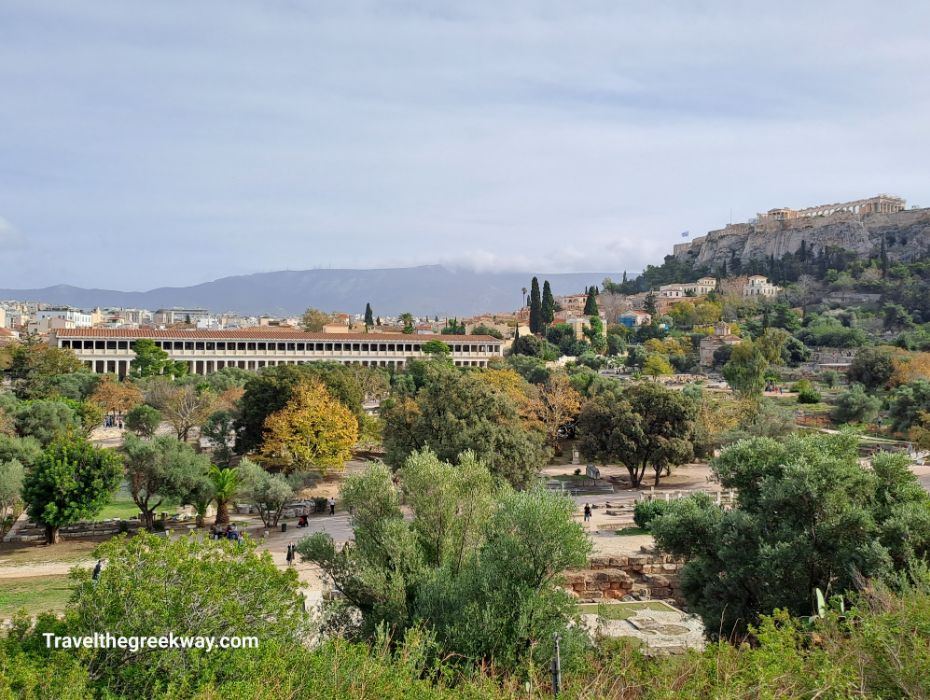
Ancient Agora of Athens Tickets: The entrance fee to the Ancient Agora is €10 per person for the time between April and October and €5 between November and March.
If you are visiting Athens for the first time, you should buy the ‘package’ ticket that gives you access to 7 major sites for the current price of €30 valid for 5 days. The sites that you can visit are:
- Acropolis Hill and Slopes
- Ancient Agora of Athens and its Museum
- Roman Agora
- Kerameikos
- Hadrian’s Library
- The Lyceum (Lykeion) of Aristotle
- Olympeio (Temple of Olympian Zeus)
Half-Price Entrance (not valid for the combo ticket): All archaeological sites in Greece have a half-price ticket from November 1 to March 31. All sites take both credit cards and cash and offer an official ticket.

Free Entrance: From November to March, admission is free on the first Sunday of the month and on the dates March 6th, April 18th, May 18th, the last weekend of September, and October 28th.
Ancient Agora of Athens Summer Opening Hours 8:00-20:00.
Tips for Visiting Ancient Agora of Athens
Is Ancient Agora Accessible?
Yes, it is. There is flat access at the entrance followed by a 15 m-long ramp going down into the Agora.
Is there a WC inside the Ancient Agora?
Yes, there is, free of charge in Attalos stoa.
Can I drink or eat inside the Agora?
You are not allowed to eat or drink inside the Agora, only water is allowed to carry around. There is no café/restaurant inside the site.
Recommended Guided Tours for Athens
I highly recommend you book a Guided Tour of the Acropolis of Athens, Ancient Agora and Agora Museum (4 hours) with a local licensed guide (from the Greek Ministry of Culture). It will bring into life how Athens of the 5th century BC was.
If you would like to enjoy a full-day, private guide to all Athens Highlights, (8 hours) then this tour is highly recommended with a Badge of Excellence from Viator.
How much time do you need in Ancient Agora?
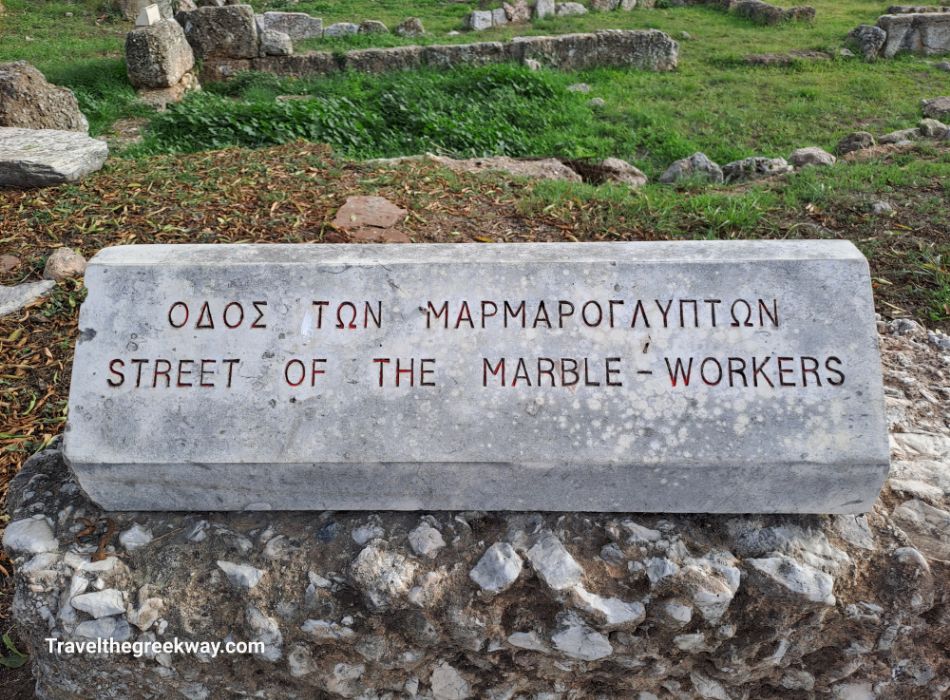
If you opt for a self-guided visit to the site, the time you will spend in Ancient Agora largely depends on your pace and interests. It’s a truly immersive experience to meander through the grounds, contemplating that this is the very place where the likes of Socrates, Apostle Paul, and numerous others once walked, much like you are doing today.
The Agora, adorned with trees and benches, creates a tranquil and peaceful haven, allowing you to almost forget that you are in the midst of a bustling city of millions.
Other Agoras in Greece
- Roman Agora in Athens, very close to Ancient Agora in the Plaka area
- Roman Agora of Thessaloniki, located on the upper side of Aristotelous Square
- Ancient Agora of Kos island
- Ancient Agora of Thasos island
- Ancient Agora of Corfu island
- Ancient Agora of Megalopolis
- Ancient Agora of Argos
Where to Stay near Ancient Agora
L’Avventura Athens (mid-range) is a fabulous property with a double terrace and an amazing view, 5 minutes from the Ancient Agora of Athens.
How to Get to Ancient Agora
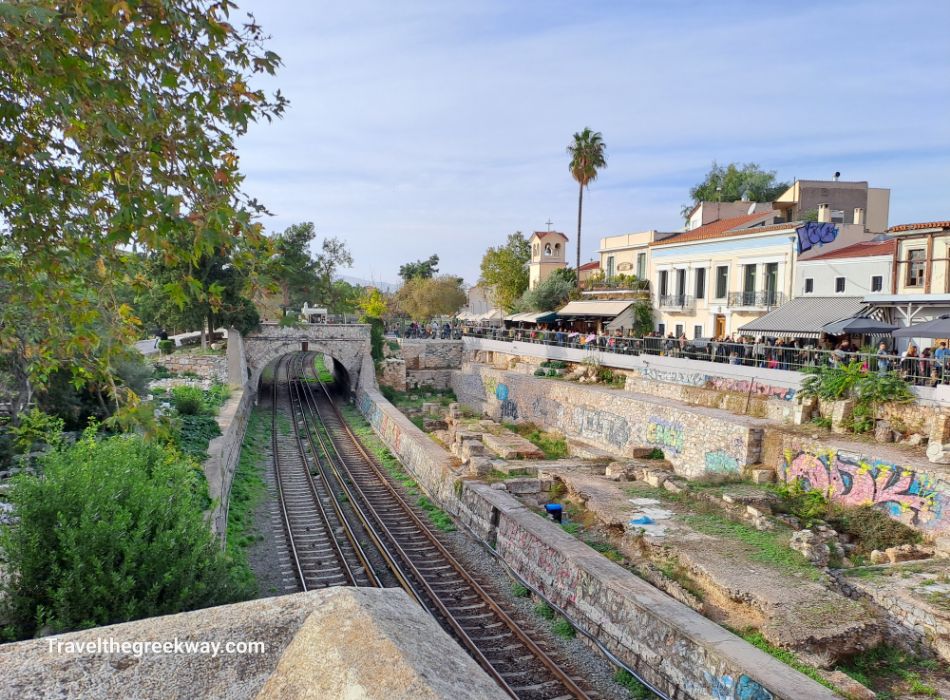
Ancient Agora is conveniently located in the middle of 2 metro stations and is only a 5-minute walk from Monastiraki or Thision stations, on the pedestrian street of Adrianou 24.
The visitors to the Agora usually walk downhill from Acropolis which is 15 minutes on foot. On your way to Ancient Agora, you can visit the Roman Agora.
What else to visit near the Ancient Agora of Athens

On the parallel street, you will find Ifaistou St, which is flanked by many shops, selling all kinds of clothes, shoes, and things. Go to the Psyrri area, which is hardly 10 minutes away, and choose one of its taverns for less tourist food.
Book for Ancient Agora of Athens
Pausanias (110 – 180 CE) was a Greek traveler and geographer who lived during the reigns of Hadrian and Marcus Aurelius. He wrote 10 books with compelling depictions and an invaluable wealth of information about the ancient monuments of Greece while he was traveling between 150-180 CE. Book no 1 is devoted to the monuments of Athens and central Greece.
Did you visit the Ancient Agora of Athens?
Let me know what you think about visiting Ancient Agora in the comments, I’d love to hear whether I managed to get it onto your bucket list!
Plan My Trip to Greece
Do you need a custom travel itinerary or a transfer within Greece? Are you traveling solo, with your family or friends and need a tailor-made multi-day tour or a transfer?
If yes, please visit my dedicated Plan My Trip Page for a free itinerary!
Sources
- odysseus.culture.gr
- American School of Classical Studies in Greece
My Most Popular Posts
- Greece Packing List – What to pack for a 10-day trip to Greece
- Mamma Mia Greece Locations – All the mainland and island shooting areas in Greece
- Salamina Island – So close to Athens, so unknown to the mass tourism
Essential Travel Info for Greece
- ‘Hello’ and ‘Thank You’ in Greek: “Ya sou” and “Efharisto”
- Booking.com: I use Booking.com because I can get the best deals on hotels and apartments, free cancellations, and great prices!
- All-Inclusive Resorts in Greece
- FerryScanner to book ferries to the Greek Islands
- Rent an Affordable Car in Greece
- Athens Metro Website (timetables and ticket info)
- Map of Athens Metro
- Trains (Hellenic Train)
- Public Buses KTEL
- Get Your Guide: For all your day or multi-day tours and city guide needs, I use Get Your Guide
- Emergency Numbers Anywhere in Greece: AMBULANCE 166 – FIRE 199 – POLICE 100– EMERGENCY NUMBER 112

Great help. We’re doing a school project on recreating the agora, and we found almost everything we needed to know at this site. Thanks for the details.
I am very glad you found my post on Ancient Agora useful! I wish you the best of success with your school project 🙂
Evgenia